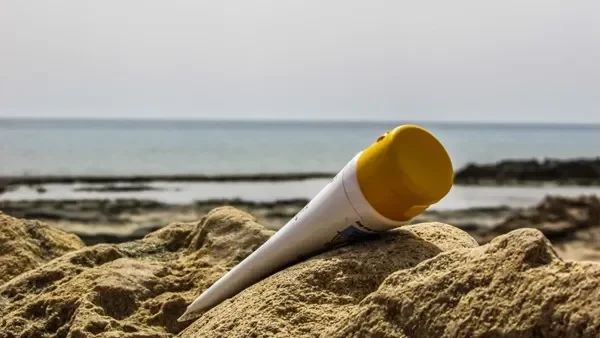
With the warm season in full swing, sunscreen is essential in protecting against harmful UV rays, which can contribute to a plethora of health issues such as skin cancer. Whilst it’s proven to protect the skin, a recent study from Stanford University1 showed that common chemicals found in sunscreens are highly toxic to marine life.
Sunscreen is washed off the skin once water hits it – if you take a swim in the sea, sunscreen can wash off and if you take a shower, it will wash off and end up at your water treatment plant adding to the human-induced stressors marine environments are experiencing.
Some of the threatening effects observed include:
- Dolphins: Chemicals accumulate in tissues causing hormonal imbalances which are transferred to the young
- Fish: Can cause endocrine dysfunctions leading to decreased fertility as well as female characteristics in male fish
- Coral: Accumulates in tissues which can induce bleaching2 and DNA damage
- Mussels: Induces stress responses and defects in the young
- Sea Urchins: Induces immunotoxicity as well as endocrine dysfunctions, causing deformations in the young
How do I protect myself and marine life?
The first step in using reef-safe sunscreen is checking the ingredients list. Due to poor regulation, brands are not required to test if products are impacting marine life therefore, labels claiming ‘reef-safe’ or ‘reef-friendly’ are often untrustworthy.
Make sure your sunscreen does not contain harmful ingredients like:
- Oxybenzone
- Octinoxate
- Octocrylene
- Benzophenone
- 3-Benzylidene camphor
- 4-Methylbenzylidene camphor
- “Nano-sized” zinc or titanium; opt for micro-sized mineral sunscreens as nanoparticles are extremely toxic in high concentrations
- Microplastics, such as “exfoliating beads” as these build up on reef surfaces, impeding photosynthesis
大发体育在线_大发体育-投注|官网 information can be found here.
When possible, consider sunscreen alternatives like wearing Ultraviolet Protection Factor (UPF) 50+ clothing and hats, seeking shade during hours of high UV index (usually midday), and using umbrellas. Don’t forget to grab your broad-spectrum sunglasses to avoid long-term eye damage caused by UVA and UVB rays.
REFERENCES
- D. Vuckovic et al., Science 376, 644 (2022)
- NOAA. What is coral bleaching? National Service website, 12/01/2021



